
Make Your Own Mini Onitsuka Tiger Shoes at This Awesome Kobe Sports Museum!
- Written by: WESTPLAN
ASICS is a world-class Japanese sporting goods manufacturer. At the ASICS Sports Museum visitors can learn about the brand’s history, vison, and products as well as experience the performance of top athletes.
The ASICS Story
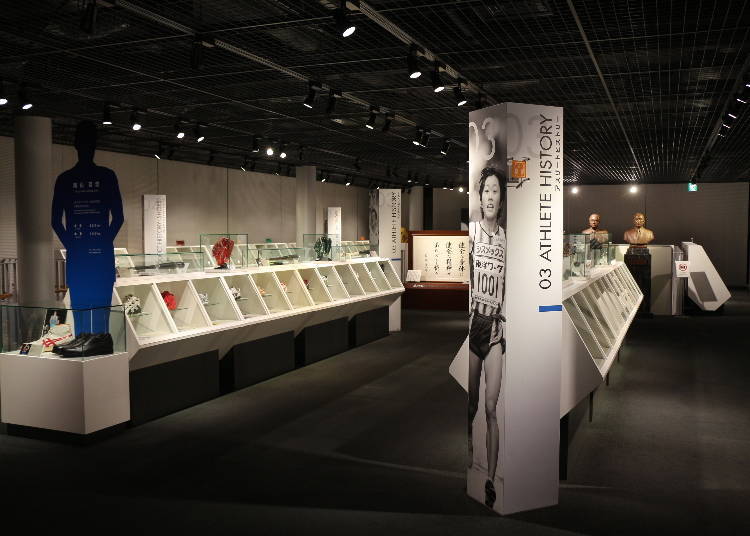
Onitsuka Co., Ltd., the predecessor of ASICS, was founded in Kobe in 1949. The sports shoe manufacturer started out producing basketball shoes, and became well known throughout Kobe and the rest of Japan.
When hearing “Onitsuka Tiger,” many Japanese people feel a sense of nostalgia. Onitsuka entered the world stage by providing shoes to the Japanese national team for the 1956 Melbourne Olympics. In 1977, Onitsuka merged with two other companies to form ASICS.
The ASICS Sports Museum
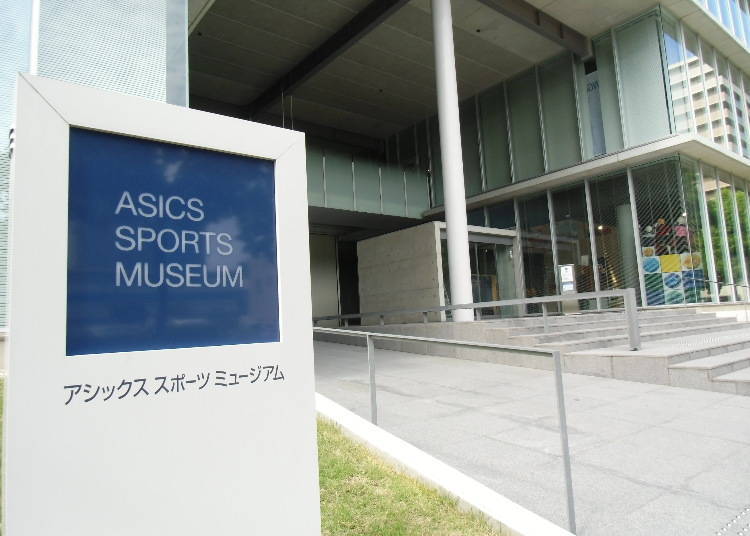
Opened in 2009, the ASICS Sports Museum was developed to educate visitors about the brand and its foundational philosophies, including contribution to sports culture and the local community. The museum is part of the ASICS head office near Nakafuto Station on the Nanko Port Town Line on Kobe’s Port Island.
The two-floor museum consists of the first floor “Athlete Field” where guests can experience the world of top athletes and the second floor “History Field” where they can learn about the history of ASICS. Admission is free, and reservations are not required. For groups of more than 10 people, guided tours are available in English, but do require a reservation.
The History Field
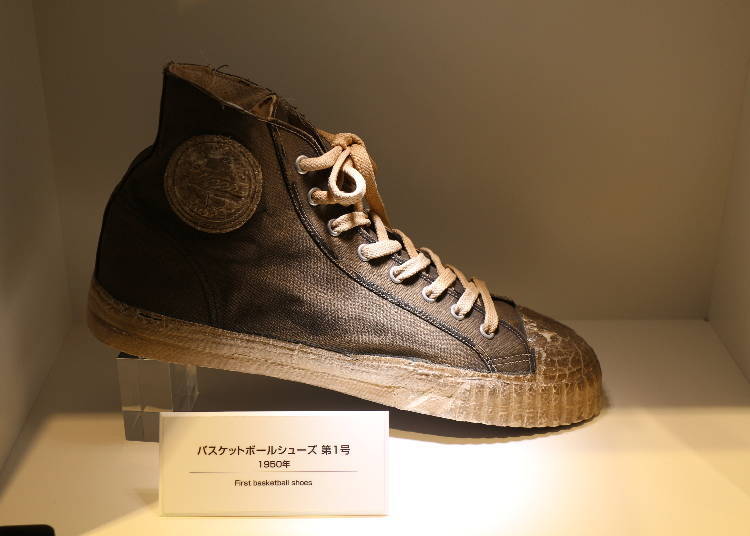
The tour starts on the second floor with exhibits that introduce the company’s history and products in chronological order. The “Theater Room” plays related videos, while the “Corporate History” area presents the company’s history from its foundation to the present through the use of informative panels and product displays from each time period. In addition, the Onitsuka Co., Ltd.’s first basketball shoe, made in 1950, is also on display.

The highlights of Corporate History are the photographs and real shoes on display along with their descriptions. During the Onitsuka era, the Japanese team won two gold medals in wrestling at the 1956 Olympics, while wearing shoes supplied by the company.
Since then, new products have been continuously developed and ASICS still supplies shoes for the Olympic team.


In the “Athlete History” area, the shoes on display are those actually worn by athletes and include their profiles. While looking at them, visitors can relive the scenes of the players' heroics.
“Product History” showcases ASICS products for individual sports like the marathon, athletics, basketball, and volleyball to name a few.
The Athlete Field
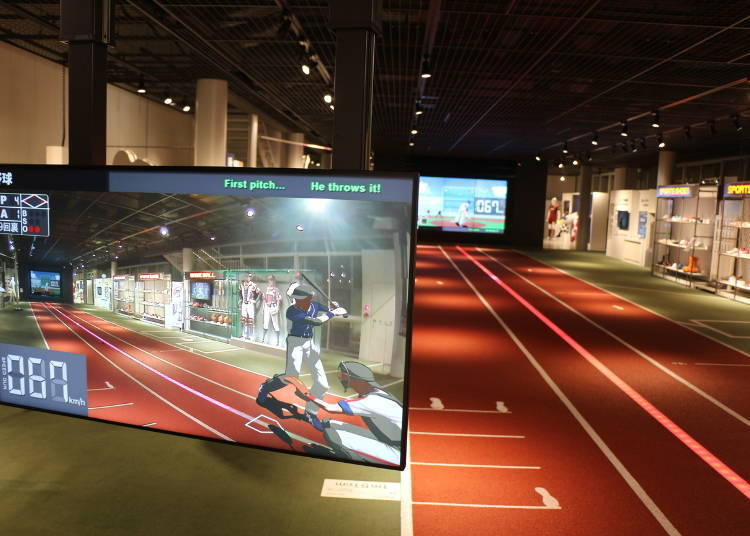
The highlights of the first floor Athlete Field are Super Vision and Virtual Vision, which include interactive 100-meter dash, tennis, and baseball virtual exhibitions.
In the baseball Super Vision exhibit, LED lights projected on a screen move at the same speed as a ball thrown by a pitcher, giving a surprising sense of realism as well as an understanding of the distance and speed involved.

In “Run / Jump / Throw,” the silhouettes of athletes such as a hurdler, a high jumper, and a javelin thrower are displayed with actual sports equipment. Shoes for each are also on display and can be handled by visitors, who learn how the different skills and techniques used in each sport require different, specifically constructed shoes.

Foot prints painted on the ground represent the measurements of track and field athletes’ strides and jumping distances, including that of Mizuki Noguchi, who won the marathon gold medal at the 2004 Athens Olympics.

At “Touch (Touch Corner)” baseball uniforms, gloves, and other equipment are on display and visitors can actually try them on. The bats are identical to those of professional players, and the differences in weight and thickness can be compared.
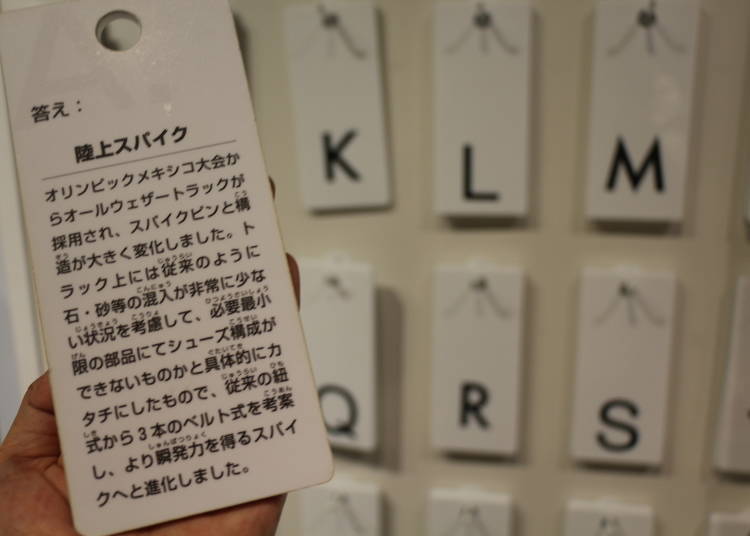
After seeing and handling various shoes, there’s a quiz for those who are up for a challenge. Visitors are tested on what kind of sports each of the eighteen types of shoes on display are used for. The functions required for each varies depending on their use, and the quiz answers are written on the back of lettered cards hanging on a nearby board.
Before you leave
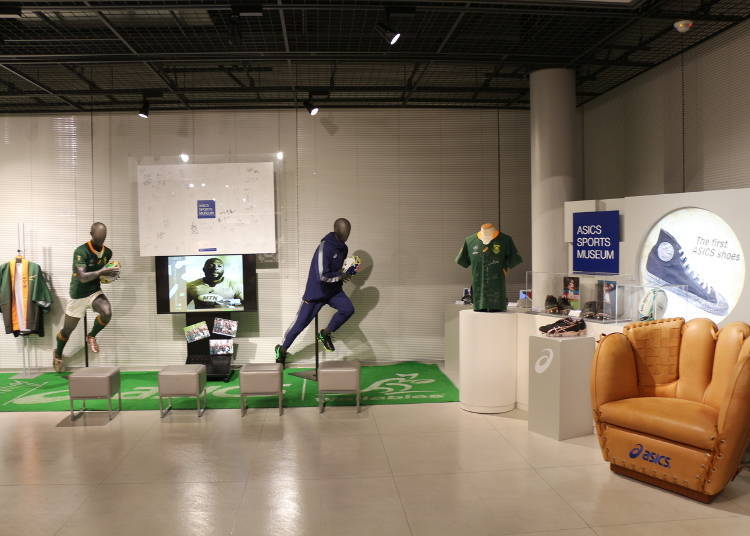
Photography is prohibited on the museum floors, but is allowed at the photo zone near the entrance. There visitors can also see and touch rugby uniforms and shoes from the 2019 Rugby World Cup champion South African team, which played a match in Kobe during the tournament. It's fun to try on the uniforms and take some happy photos! (Exhibition contents may change depending on the season.)
Make Miniature Shoes!
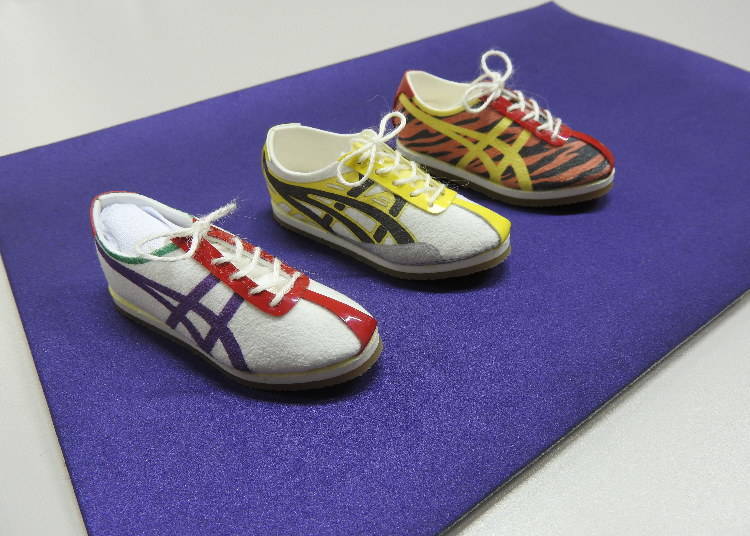
Every Saturday, the museum holds a miniature shoe making class. Using the same procedure as actual shoe production, participants assemble small parts make an 8cm shoe.
The workshop is very popular because of the opportunity to make small replicas of standard ASICS shoes. Be sure to check the event calendar on the museum’s website before making a reservation by phone. The participation fee is 500 yen.
Known Worldwide
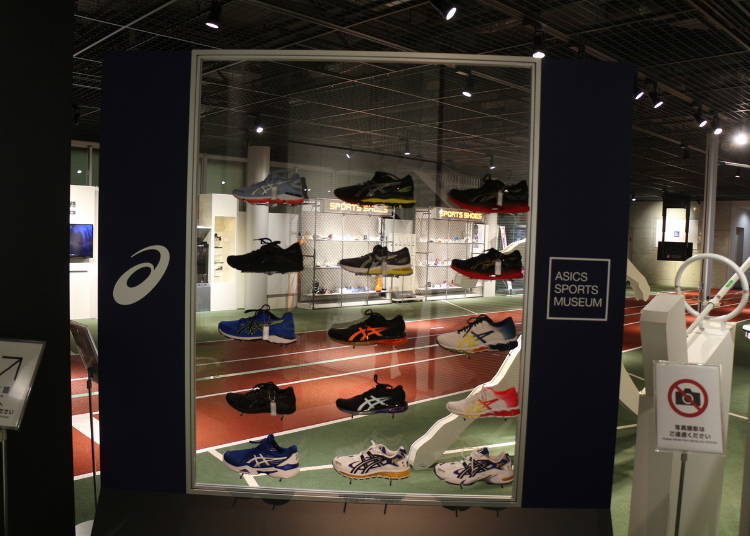
ASICS running shoes have a strong reputation worldwide. Onitsuka Tiger made an impact on the Asian market when it was revived as a fashion brand in 2002, spurring further worldwide popularity. There are many ASICS stores internationally, and overseas tourists often make a point of visiting the domestic shops when traveling in Japan.
While the ASICS Sports Museum isn’t widely visited by tourists, it’s worth stopping by if you happen to be in Kobe.
Tourist Support
Information pamphlets are available in English, and English-speaking staff members can offer assistance. English or Chinese audio guides may be rented at the reception desk, and all the exhibits have English descriptions.
-
ASICS SPORTS MUSEUMアシックススポーツミュージアム
- Address Address: 7-1-1 Minatojima Nakamachi, Chuo-ku, Kobe, Hyogo 650-0046
- Phone Number 078-303-1329
Hours: 10:00 - 17:00 (last entry 16:30); closed Sundays, Mondays, National Holidays, Summer Holidays, New Year's Holidays
Admission: Free
Text by:WESTPLAN
Kiko Matsuda, Keiko Kimura, Risa Tsushi, and a team of female writers familiar with Kansai. We love eating, drinking and traveling! We share fun information based on our experiences.
- Area
- Category
*Prices and options mentioned are subject to change.
*Unless stated otherwise, all prices include tax.
Popular Tours & Activitiess
Recommended places for you
-
Goods

Yoshida Gennojo-Roho Kyoto Buddhist Altars
Gift Shops
Nijo Castle, Kyoto Imperial Palace
-

ISHIDAYA Hanare
Yakiniku
Kobe, Sannomiya, Kitano
-

Kambei Sannomiyahonten
Yakiniku
Kobe, Sannomiya, Kitano
-

Todai-ji Temple
Temples
Nara, Ikoma, Tenri
-

Jukuseiniku-to Namamottsuarera Nikubaru Italian Nikutaria Sannomiya
Izakaya
Kobe, Sannomiya, Kitano
-

Kanzenkoshitsuyakinikutabehodai Gyugyu Paradise Sannomiya
Yakiniku
Kobe, Sannomiya, Kitano
-

A First Look at NEMU RESORT’s 2026 Grand Renewal in Ise-Shima: A Resort Shaped by Village, Sea, and Forest
by: Guest Contributor
-

Kyoto's Hidden Treasures Open This Winter! Enjoy Exclusive Access to 15 Rare Cultural Sites (Jan-Mar 2026)
by: Guest Contributor
-
Ad

Recharge and Relax with a Healing Getaway at Kamenoi Hotel Toba
-
Ad

Café Bahnhof in Osaka: The home-roasted coffee that captivated G20 leaders!
-
Ad

Experiencing Manga as Culture, Not Just Reading It: Expo 2025 with Rumiko Takahashi
-

Celebrate a Dreamy Barbapapa Christmas at JR Osaka Station's Twilight
by: Guest Contributor
Inspiration for Accommodations
-

Spacious Family Hotel in Namba: 20 Comfortable Stays for Family Fun
-

Charming Hotels to Enjoy the Spectacular Views of Arashiyama's Autumn Leaves from Your Room
-

Experience Stunning Views of Osaka Castle from Private Spaces: Top Hotels Near Osaka Castle
-

Recommended by Visitors! Arashiyama's Best-Rated Hotels
-

Family-Friendly Universal Studios Japan Hotel with Excellent Access
-

Enjoy a Comfortable Stay in Osaka! 10 Hotels with Convenient Airport Shuttle Services
-

Top 10 Recommended Hotels Near Namba Station with Great Access
-

Enjoy Night Views from Your Room! Recommended Hotels in Namba Area
-

38 Best Things to Do in Kyoto: See, Eat, and Shop Your Way Through Japan's Cultural Capital
-

Visiting Tsutenkaku Tower: Osaka's Retro Icon in the Heart of Shinsekai
by: Guest Contributor
-

5 Popular Shops and Gift Ideas Along Arashiyama Shopping Street
-

3 Best Izakaya In Osaka Where You Can Enjoy Drinks and Local Dishes, Recommended by Locals
-

6 Surprisingly Cheap Things in Japan
-

Healthcare in Japan for Tourists: What to Do When You Get Sick or Injured in Japan
- #best gourmet Osaka
- #things to do Osaka
- #what to do in kyoto
- #what to bring to japan
- #best gourmet Kyoto
- #new years in Osaka
- #what to buy in nanba
- #Visiting Osaka
- #onsen tattoo friendly arima
- #daiso
- #Visiting Kyoto
- #best japanese soft drinks
- #japanese fashion culture
- #japanese convenience store snacks
- #japanese nail trends













